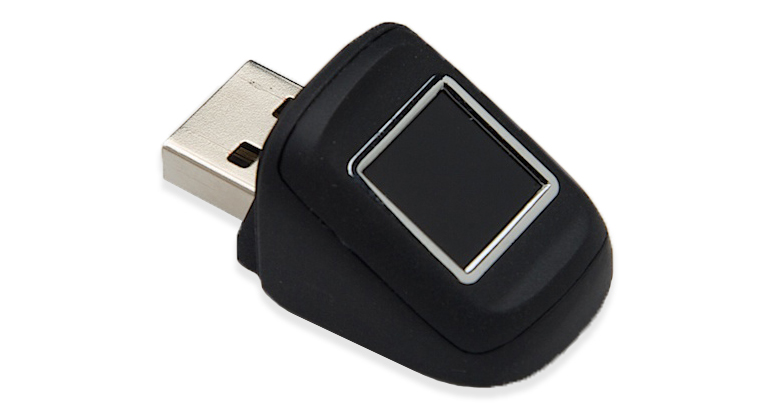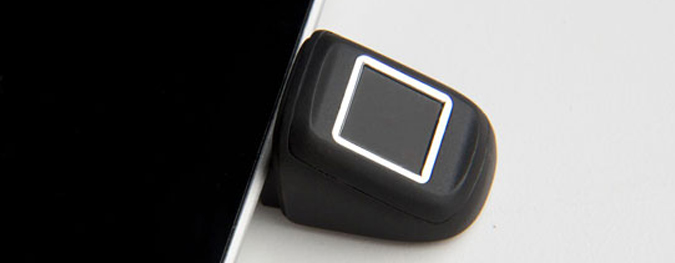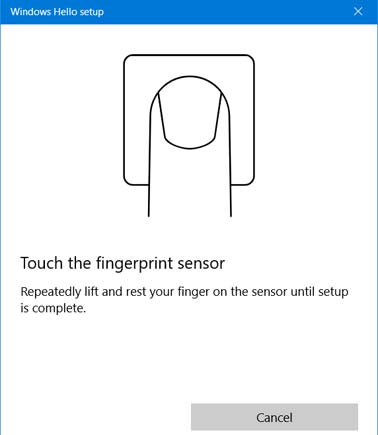Laptop Mag Verdict
Portable and convenient, the Bio-Key SideTouch adds fingerprint logins to any Windows 10 laptop.
Pros
- +
Easy setup, quick logins with no swiping
Cons
- -
Can't stay attached when you travel
Why you can trust Laptop Mag
Who needs to type a password when you have Windows Hello? Built into Windows 10 and made even more powerful with this month's Anniversary Update, Hello allows you to log into the operating system and certain apps and websites using your face or a fingerprint. If your laptop doesn't have a 3D camera (for the face login) or a built-in fingerprint reader, you can add the latter capability with a third-party accessory like the Bio-Key SideTouch.
The $39.99 SideTouch attaches directly to any USB 2 or 3 port on your laptop and scans your digits very accurately with a single press. However, you'll have to detach this thumb-size device every time you put your laptop in its bag.
Design
Unlike Bio-Key's EcoID, a small rectangle that lives on your desk and connects to your computer with a micro USB cable, the SideTouch is a tiny black cube that plugs right into a standard USB port on the side (or back) of your laptop.
At 0.8 x 0.9 x 0.66 inches and 0.30 ounces, the SideTouch is extremely light and easy to carry, in even the smallest pocket. It's so small, in fact, that I lost track of it in my bag several times during testing.
The SideTouch snapped snugly into the side of two different laptops I tested, but there was still a small amount of play when I rubbed against it. It comes with a small rubber shim that makes it an even tighter fit when you slide it over the USB connector. Bundled instructions suggest that you use the shim specifically when attaching to Microsoft Surface tablets, which I did with good success.
MORE: Most Awesomely Quirky USB Keys
Sign up to receive The Snapshot, a free special dispatch from Laptop Mag, in your inbox.
Travel Readiness and Convenience
I would like to be able to leave a fingerprint reader plugged in, even when I close the notebook, put the laptop in my bag and pull it out again. Unfortunately, unlike a tiny 2.4-GHz mouse dongle or a mini Wi-Fi connector, the SideTouch protrudes too much to keep it connected as you carry your computer around your home or office, or take it on a trip.
When I connected the SideTouch to my laptop and stuck the system in my backpack, the fingerprint reader remained attached, but I would worry about it falling or snapping off if I grabbed the laptop too roughly or bumped into anything. A Bio-Key representative said that the company doesn't recommend that users leave the device attached when they're carrying their laptops around.
Because you have to carry the reader separately, and then reconnect it when you whip out your laptop, its convenience factor is limited during travel. When you set up Windows Hello fingerprint recognition, you have to designate a four-digit PIN as an alternative login credential. Typing in four digits is always going to be faster than plugging in a peripheral and then pressing your finger down.
If your notebook is going to remain in one place for a long time, such as on your desk or your nightstand, you can leave the SideTouch plugged in and take full advantage of its convenience, even if you balance the computer on your lap. However, Bio-Key's rectangular EcoID reader is much better for people who use docks with laptops, because it connects via a USB cable and can sit right next to your mouse so that you're not forced to reach across your workspace.
Setup
The Bio-Key SideTouch requires no special drivers or software. As soon as I plugged it in for the first time, Windows 10 recognized it and installed a standard driver in the background. On one system, this happened so quickly that I didn't even notice it occurring.
To use the device with Windows Hello, I navigated to the "sign-in options" portion of the Windows settings menu and clicked "Add" under the Windows Hello heading. The OS then prompted me to press down my finger six times to enroll the fingerprint, and I was done.
MORE: Most Awesomely Weird USB Gadgets
Although we tested the device only with Windows 10, Bio-Key said that the SideTouch also works with Windows 8.1.
Speed and Accuracy
The SideTouch uses an IDEX Eagle II Sensor, which promises a false acceptance rate (FAR) of just 0.0001 percent, or 1 in a million. Bio-Key also said that the false rejection rate (FRR) is 5 percent or less, or about 1 in 20 login attempts.
In my experience, the SideTouch was extremely accurate, recognizing my finger most of the time. On a few occasions, my login failed because I touched the device too hard or too quickly, or put the wrong part of my finger over the sensor. Once I figured out how much force to use and how long to hold my finger down, the rejection rate decreased.
A successful login took only 1.5 seconds from the moment I put my finger on the reader to the time that Windows 10 completely unlocked and showed me the desktop.
The Bottom Line
The Bio-Key SideTouch provides a speedy, accurate and affordable way to add biometric authentication -- and the convenience of Windows Hello -- to a laptop or tablet that doesn't come with a built-in fingerprint reader.
If you frequently plug your computer into a dock and use it at your desk, you'll be better off with Bio-Key's EcoID reader, which lies flat on a table and connects to your hub via USB cable. However, if you want a fingerprint reader that's extremely portable and plugs right into the side of your notebook, the SideTouch is your best choice.
- Laptops with the Longest Battery Life
- Best 2-in-1s (Laptop/Tablet Hybrids)
- Best Ultrabooks (Thin-and-Light Windows Laptops)
BIO-Key SideTouch Specs
| Accessories Type | Fingerprint Readers |
| Brand | BIO-Key |
| Company Website | http://www.bio-key.com/ |
| Size | 0.8 x 0.9 x 0.66 inches |
| Weight | 0.30 ounces |





